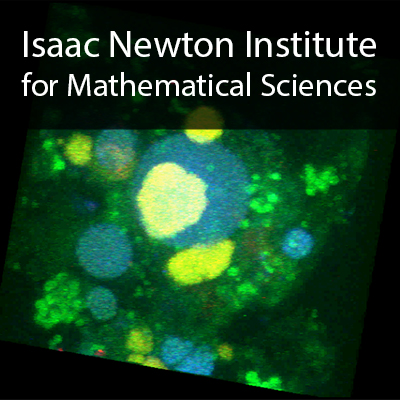Contributed Talk 2: Structure, Function and Dynamics in Microbial Communities
Duration: 17 mins 37 secs
Share this media item:
Embed this media item:
Embed this media item:
About this item

| Description: |
Haas, A (San Diego State University)
Thursday 30 October 2014, 15:10-15:25 |
|---|
| Created: | 2014-11-05 10:59 |
|---|---|
| Collection: | Understanding Microbial Communities; Function, Structure and Dynamics |
| Publisher: | Isaac Newton Institute |
| Copyright: | Haas, A |
| Language: | eng (English) |
| Distribution: |
World
|
| Explicit content: | No |
| Aspect Ratio: | 16:9 |
| Screencast: | No |
| Bumper: | UCS Default |
| Trailer: | UCS Default |
| Abstract: | Co-authors: Yan Wei Lim (San Diego State Universit), Craig Nelson (University of Hawai?i at Manoa), Linda W Kelly (San Diego State Universit), Jennifer Smith (Scripps Institution of Oceanography), Stuart Sandin (Scripps Institution of Oceanography), Forest Rohwer (San Diego State Universit)
The shift in benthic reef communities from coral to algae dominated systems as a result of anthropogenic influences is widely documented. Recent research has focused on the biogeochemical impacts of these shifts and on the resulting reciprocal influences between macro- and microbial communities. Although non calcifying algae release significantly higher amounts of dissolved organic carbon (DOC) than calcifying organisms, declines in the DOC standing stock with increasing algal cover have been described in multiple locations. This discrepancy of “more DOC gives less DOC” may be explained by an algal exudate fueled, enhanced microbial community metabolism. Our recent studies support this theory and provide potential mechanisms on how this “super-heterotrophic” community may facilitate long-term depletion of ambient DOC stocks. Data from 60 sampling sites across 3 different ocean systems link increased algal cover to low DOC concentrations and elevated mi crobial abundance. Comparison of microbial metagenomes across a gradient of benthic cover shows higher relative abundance of genes encoding for the citric acid cycle and changes in the preference of glycolytic pathways from the EMP to the ED and PP pathways with increasing algal abundance. Although the EMP pathway is, based on stoichiometry of reactants and products, the most effective pathway, it requires up to 3.5 times higher enzyme levels to counterbalance its low thermodynamic driving force to support the same metabolic rate than the EMP pathway. This becomes increasingly important for microbial growth on more oxidized carbon sources. A shift towards the PP pathway may open up additional carbon resources especially in pentose rich systems. In concert these findings indicate that an increase in the overall heterotrophic metabolism and a change in pathways of carbohydrate breakdown to pyruvate enables algal fostered microbial communities to tap deeper, but more inefficiently into the refractory carbon pool. |
|---|---|
Available Formats
| Format | Quality | Bitrate | Size | |||
|---|---|---|---|---|---|---|
| MPEG-4 Video | 640x360 | 1.93 Mbits/sec | 256.05 MB | View | Download | |
| WebM | 640x360 | 0.98 Mbits/sec | 130.01 MB | View | Download | |
| iPod Video | 480x270 | 522.38 kbits/sec | 67.40 MB | View | Download | |
| MP3 | 44100 Hz | 249.83 kbits/sec | 32.27 MB | Listen | Download | |
| Auto * | (Allows browser to choose a format it supports) | |||||

